Showing Spotlights 9 - 16 of 65 in category All (newest first):
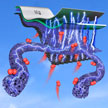 Recently, researchers have engineered a next-generation battery technology - known as metal-air batteries - which can be easily fabricated into flexible and wristband-like cells. Although metal-air batteries powered devices still are not ready yet for commercial applications, the current studies have established solid evidence that these devices have provided enormous opportunities to develop the next generation of flexible, wearable and bio-adaptable power sources. Researchers now report a solution to overcoming the current limitation on sluggish reaction kinetics of air cathodes in Mg-air batteries.
Recently, researchers have engineered a next-generation battery technology - known as metal-air batteries - which can be easily fabricated into flexible and wristband-like cells. Although metal-air batteries powered devices still are not ready yet for commercial applications, the current studies have established solid evidence that these devices have provided enormous opportunities to develop the next generation of flexible, wearable and bio-adaptable power sources. Researchers now report a solution to overcoming the current limitation on sluggish reaction kinetics of air cathodes in Mg-air batteries.
Nov 20th, 2018
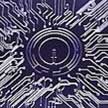 Researchers have developed a new process for completely transparent and flexible circuits of any patterns as one wishes. The circuit patterns are created via the well-developed microfluidic technology on transparent and flexible substrates. The conductors are generated by spin coating of silver nanowires along the patterns. The advance stimulates more implications in future electronics. The researchers have demonstrated a simple application of the circuits as a biosensor for glucose detection.
Researchers have developed a new process for completely transparent and flexible circuits of any patterns as one wishes. The circuit patterns are created via the well-developed microfluidic technology on transparent and flexible substrates. The conductors are generated by spin coating of silver nanowires along the patterns. The advance stimulates more implications in future electronics. The researchers have demonstrated a simple application of the circuits as a biosensor for glucose detection.
May 31st, 2018
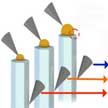 Electrical contacts are essential components for any electrical device and when a lack of control over the final properties is present designing and optimising the system is impossible. The ability to define the contacts as Schottky or Ohmic with high or low resistance is complicated by the 2-D, 1-D or quasi 1-D nature of many nanomaterials. That's why researchers have developed a deep understanding of a unique effect at these length scales that occurs in nanowires and combines the synergistic relationship between metal nanocatalyst particles and nanowires.
Electrical contacts are essential components for any electrical device and when a lack of control over the final properties is present designing and optimising the system is impossible. The ability to define the contacts as Schottky or Ohmic with high or low resistance is complicated by the 2-D, 1-D or quasi 1-D nature of many nanomaterials. That's why researchers have developed a deep understanding of a unique effect at these length scales that occurs in nanowires and combines the synergistic relationship between metal nanocatalyst particles and nanowires.
Jan 5th, 2017
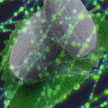 The serious threat of particulate matter (PM) air pollution to human health spurs development of advanced filter technologies. Particular efforts have been made in designing air filters with both high filtration efficiency and low airflow resistance by utilizing carbon nanotubes and electrospun polymer and inorganic nanofibers. In new work, scientists explored the performance of electrospun silk nanofiber membranes as air filters, which showed both of lightweight and high efficient features.
The serious threat of particulate matter (PM) air pollution to human health spurs development of advanced filter technologies. Particular efforts have been made in designing air filters with both high filtration efficiency and low airflow resistance by utilizing carbon nanotubes and electrospun polymer and inorganic nanofibers. In new work, scientists explored the performance of electrospun silk nanofiber membranes as air filters, which showed both of lightweight and high efficient features.
Jul 13th, 2016
 Compared to the conventional inefficient incandescent and fluorescent lighting technologies, LED light bulbs can, in principle, operate at an efficiency level of 100%. The current LED lighting technology, however, is not even close to reaching this limit. This is due to several problems which, however, can be by and large solved by employing tunnel junction integration into current nanowire LED structures. Demonstrating this, researchers have developed tunnel junction nanowire LEDs that can eliminate the use of resistive p-GaN contact layers, leading to reduced voltage loss and enhanced hole injection.
Compared to the conventional inefficient incandescent and fluorescent lighting technologies, LED light bulbs can, in principle, operate at an efficiency level of 100%. The current LED lighting technology, however, is not even close to reaching this limit. This is due to several problems which, however, can be by and large solved by employing tunnel junction integration into current nanowire LED structures. Demonstrating this, researchers have developed tunnel junction nanowire LEDs that can eliminate the use of resistive p-GaN contact layers, leading to reduced voltage loss and enhanced hole injection.
Oct 15th, 2015
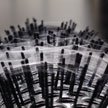 Researchers developed a simple controllable set-up for drawing single filament nanofibers from polymer solutions or melts using a rotating rod or a set of rods (round brush). This method can be used to produce 3D tissue scaffolds by winding nanofibers onto spools of different shapes and dimensions and depositing cells of interest at the same time. The new method, which the scientists named touch-spinning, has excellent control over the fiber diameter and is compatible with all kinds of polymeric materials, polymer melts and solutions, polymer composite materials, and biopolymers.
Researchers developed a simple controllable set-up for drawing single filament nanofibers from polymer solutions or melts using a rotating rod or a set of rods (round brush). This method can be used to produce 3D tissue scaffolds by winding nanofibers onto spools of different shapes and dimensions and depositing cells of interest at the same time. The new method, which the scientists named touch-spinning, has excellent control over the fiber diameter and is compatible with all kinds of polymeric materials, polymer melts and solutions, polymer composite materials, and biopolymers.
Sep 23rd, 2015
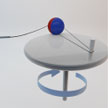 The most common method for making nanofibers employs electrospinning that uses an electrical charge to draw nanofibers from a polymeric solution. This technique utilizes large voltages and is strongly influenced by the dielectric properties of the material. It is also impossible to electrospin many biopolymers without blending with another polymer. Addressing these drawbacks, a team of researchers report a new method - magnetospinning - which utilizes a simple set-up that is independent of the dielectric constant of the solvent and polymer used.
The most common method for making nanofibers employs electrospinning that uses an electrical charge to draw nanofibers from a polymeric solution. This technique utilizes large voltages and is strongly influenced by the dielectric properties of the material. It is also impossible to electrospin many biopolymers without blending with another polymer. Addressing these drawbacks, a team of researchers report a new method - magnetospinning - which utilizes a simple set-up that is independent of the dielectric constant of the solvent and polymer used.
May 11th, 2015
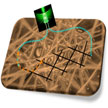 The use of copper as an alternative electrode material to silver would reduce the cost of conductive inks. Nevertheless, copper nanowire conductors face a serious bottleneck for future practical use in flexible and stretchable optoelectronics: although they are nearly as conductive as silver, this conductivity is not stable. Researchers have now demonstrated conductive copper nanowire elastomer composites with ultrahigh performance stability against oxidation, bending, stretching, and twisting. This material offers a promising alternative as electrodes for flexible and stretchable optoelectronics.
The use of copper as an alternative electrode material to silver would reduce the cost of conductive inks. Nevertheless, copper nanowire conductors face a serious bottleneck for future practical use in flexible and stretchable optoelectronics: although they are nearly as conductive as silver, this conductivity is not stable. Researchers have now demonstrated conductive copper nanowire elastomer composites with ultrahigh performance stability against oxidation, bending, stretching, and twisting. This material offers a promising alternative as electrodes for flexible and stretchable optoelectronics.
Dec 2nd, 2014
 Recently, researchers have engineered a next-generation battery technology - known as metal-air batteries - which can be easily fabricated into flexible and wristband-like cells. Although metal-air batteries powered devices still are not ready yet for commercial applications, the current studies have established solid evidence that these devices have provided enormous opportunities to develop the next generation of flexible, wearable and bio-adaptable power sources. Researchers now report a solution to overcoming the current limitation on sluggish reaction kinetics of air cathodes in Mg-air batteries.
Recently, researchers have engineered a next-generation battery technology - known as metal-air batteries - which can be easily fabricated into flexible and wristband-like cells. Although metal-air batteries powered devices still are not ready yet for commercial applications, the current studies have established solid evidence that these devices have provided enormous opportunities to develop the next generation of flexible, wearable and bio-adaptable power sources. Researchers now report a solution to overcoming the current limitation on sluggish reaction kinetics of air cathodes in Mg-air batteries.
 Subscribe to our Nanotechnology Spotlight feed
Subscribe to our Nanotechnology Spotlight feed





